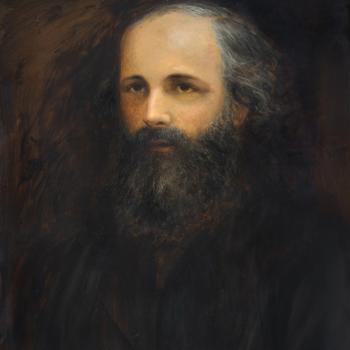
(Wikimedia Commons public domain photo)
I’ve begun reading Bruce Rosenblum and Fred Kuttner, Quantum Enigma: Physics Encounters Consciousness, 2d ed. (Oxford and New York: Oxford University Press, 2011). At the time they wrote the book, both Rosenblum and Kuttner were members of the physics faculty at the University of California at Santa Cruz.
On pages 3-4, Professor Rosenblum recounts his experience when, as a young graduate student in physics, he was visiting friends in Princeton in the 1950s and unexpectedly had the opportunity to spend a Saturday evening with Albert Einstein in Einstein’s living room. (Einstein died in 1955, at the age of 76.)
Their conversation dwelt, for some time, on a course on quantum mechanics that Rosenblum was taking. Einstein was very interested in — really, concerned by — the “strangeness” implied by quantum theory (in the formulation of which he had played a prominent though somewhat reluctant role), but Rosenblum had little to say on the subject. His course was skipping all that, focusing merely on the mathematical nuts and bolts and the “practical” implications. Rosenblum recalls that Einstein was disappointed by his responses.
It would be many years before I understood Einstein’s concern with the mysterious implications of quantum theory. I did not know that back in 1935 he had startled the developers of quantum theory by pointing out that the theory required an observation at one place to instantaneously influence what happened far away without involving any physical force. He derided this as “spooky action” that could not actually exist.
Einstein was also bothered by the theory’s claim that if you observed a small object, an atom, say, to be someplace, it was your looking that caused it to be there. Does that apply to big things? In principle, yes. Ridiculing quantum theory, Einstein once asked a fellow physicist, only half-jokingly, if he believed the moon was there only when he looked at it. According to Einstein, if you took quantum theory seriously, you denied the existence of a physically real world independent of its observation. This is a serious charge. Quantum theory is not just one of many theories in physics. It is the framework upon which all of physics is ultimately based. (4, italics in the original)
See my prior blog entry “On “Spooky action at a distance.””
Quantum theory is stunningly successful. Not a single one of the theory’s predictions has ever been shown wrong. One-third of our economy depends on products based on it. However, the worldview demanded by quantum theory is not only stranger than we might suppose, it’s stranger than we can suppose. . . .
Most of us share these commonsense intuitions: A single object can’t be in two far-apart places at once. And, surely, what someone decides to do here cannot instantly affect what happens someplace far away. And doesn’t it go without saying that there’s a real world “out there,” whether or not we look at it? Quantum mechanics challenges each of these intuitions. J. M. Jauch tells us: “For many thoughtful physicists, [the deeper meaning of quantum mechanics] has remained a kind of skeleton in the closet.” (5)












